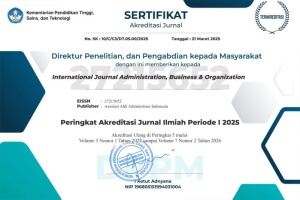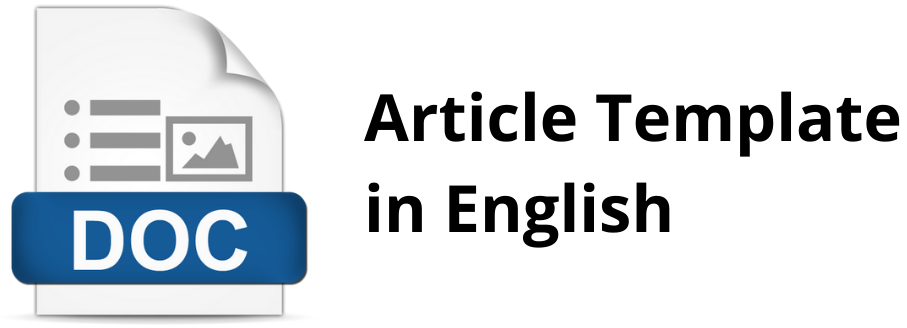Predictive Analysis of the Amount of Batik Production Using the Fuzzy Sugeno Algorithm
Abstract
To meet market demand, a company must be able to plan and determine the amount of appropriate and timely production to compete with other companies. To support this, we need a system that can determine the product's production amount so that the product can be sold according to expectations and the desired target. This study aims to determine the amount of production through a decision support system using the Fuzzy Sugeno algorithm in the form of logic used to produce a single decision or crisp. This research was conducted on batik production in a company. The problem in the batik production process is the amount of production that differs from the market demand. The factors that influence the process of determining the amount of production are the number of inventories and the number of requests used as variables in this study. The results of this study are in the form of a decision support system that can determine the amount of batik production based on the analysis of the number of requests and the amount of supply used to assist companies in making decisions with a truth value of 80%. Thus, the company can be assisted in determining the amount of production to meet market demand and increase profits and achievement targets by minimizing stockpiling.
References
Agustiana, V. (2017). Four square writing method applied in product and process based approaches combination to teaching writing discussion text. English Review: Journal of English Education, 6(1), 89-98.
Aslam, M. S., Tiwari, P., Pandey, H. M., & Band, S. S. (2023). Robust stability analysis for class of Takagi-Sugeno (TS) fuzzy with stochastic process for sustainable hypersonic vehicles. Information Sciences, 641, 119044.
Beccaro, W., Ramos, C. A. S., & Duarte, S. X. (2023). Optimizing semiconductor processing open tube furnace performance: comparative analysis of PI and Mamdani fuzzy-PI controllers. Journal of Intelligent Manufacturing, 34(7), 3015–3024.
Chong, D. J. S., Chan, Y. J., Arumugasamy, S. K., Yazdi, S. K., & Lim, J. W. (2023). Optimisation and performance evaluation of response surface methodology (RSM), artificial neural network (ANN) and adaptive neuro-fuzzy inference system (ANFIS) in the prediction of biogas production from palm oil mill effluent (POME). Energy, 266, 126449.
Darmawan, E., Yusuf, F., Suseno, E., Budianto, H., & Maesyaroh, S. (2021, June). Decision support system for the selection of exemplary teachers using profile matching method. In Journal of Physics: Conference Series (Vol. 1933, No. 1, p. 012013). IOP Publishing.
Harjadi, D., Fatmasari, D., & Hidayat, A. (2023). Consumer identification in cigarette industry: Brand authenticity, brand identification, brand experience, brand loyalty and brand love. Uncertain Supply Chain Management, 11(2), 481-488.
Itje Sela, E. (2018). Application Of The Fuzzy Inference System Method To Predict The Number Of Weaving Fabric Production. In IJID) International Journal on Informatics for Development (Vol. 7, Issue 1).
Kushwaha, O. S., Uthayakumar, H., & Kumaresan, K. (2023). Modeling of carbon dioxide fixation by microalgae using hybrid artificial intelligence (AI) and fuzzy logic (FL) methods and optimization by genetic algorithm (GA). Environmental Science and Pollution Research, 30(10), 24927–24948.
Mada, G. S., Dethan, N. K. F., & Maharani, A. E. S. H. (2022). The Defuzzification Methods Comparison of Mamdani Fuzzy Inference System in Predicting Tofu Production. Jurnal Varian, 5(2), 137–148.
Manalu, V. G., Nurhayati, S., & Setyanto, R. P. (2023). The moderating effect of competitive intensity on foresight capability and product innovation of SMEs in Indonesia. Problems and perspectives in management, 21(1), 219-229.
Manalu, V. G., Rahimi, F., & Akbar, I. (2023). Entrepreneurial Orientation and Product Innovation Performance of MSMEs in West Java: Foresight Capabilities as a Mediating Variable. Khazanah Sosial, 5(3), 508-519.
Nasution, A. S., Trihastuti, F., & Irwan, S. E. (2023). Aplikasi Fuzzy Linier Programming dengan Metode Branch and Bound untuk Mengoptimalkan Jumlah Produksi dan Keuntungan Penjualan Roti di Italia Bakery Bandar Lampung. Indonesian Journal of Applied Mathematics, 2(2), 58–73.
Nurseptaji, A. (2021). Implementasi Metode Waterfall Pada Perancangan Sistem Informasi Perpustakaan. Jurnal Dialektika Informatika (Detika), 1, 49–57. https://doi.org/10.24176/detika.v1i2.6101
Pujaru, K., Adak, S., Jana, S., & Kar, T. K. (2023). A study on fisheries production using fuzzy inference system.
Rahakbauw, D. L., Harun, R. A., & Rumlawang, F. Y. (2023). Takagi-Sugeno fuzzy modeling applied to predict sales data based on inventory data and demand data. AIP Conference Proceedings, 2588(1).
Rianto, E., & Manurung, J. (2022). Total Prediction Decision Support System Bakery and Cake Production Using Mamdani Fuzzy Method: Case Study: Neko-Neko Bakery & Cake Branch Burned Stone, Deli Serdang. Jurnal Mandiri IT, 10(2), 57–62.
Santosa, S. H., Hidayat, A. P., Siskandar, R., & others. (2022). Raw material planning for tapioca flour production based on fuzzy logic approach: a case study. Jurnal Sistem Dan Manajemen Industri, 6(1), 67–76.
Sumarni, S., Adiastuty, N., & Riyadi, M. (2022). Kemampuan Pemecahan Masalah Non Rutin Mahasiswa Pada Topik Segiempat. Aksioma: Jurnal Program Studi Pendidikan Matematika, 11(1), 563-576.
Sunarjo, W. A., Manalu, V. G., & Adawiyah, W. R. (2021). Nurturing Consumers'green Purchase Intention On Natural Dyes Batik During Craft Shopping Tour In The Batik City Of Pekalongan Indonesia. Geo Journal of Tourism and Geosites, 34(1), 186-192.
Szedlak-Stinean, A.-I., Precup, R.-E., Petriu, E. M., Roman, R.-C., Hedrea, E.-L., & Bojan-Dragos, C.-A. (2022). Extended Kalman filter and Takagi-Sugeno fuzzy observer for a strip winding system. Expert Systems with Applications, 208, 118215.
Wiharno, H., Lesmana, A. S., Maulana, Y., & Komarudin, M. N. (2023). Stock Portfolio Optimization in Bullish and Bearish Conditions Using the Black-Litterman Model. Jurnal Manajemen dan Kewirausahaan, 25(2), 92-104.
Xie, X., Wei, C., Gu, Z., & Shi, K. (2022). Relaxed resilient fuzzy stabilization of discrete-time Takagi–Sugeno systems via a higher order time-variant balanced matrix method. IEEE Transactions on Fuzzy Systems, 30(11), 5044–5050.
Zhang, L., Zong, G., Zhao, X., Zhao, N., & Sharaf, S. (2023). Reachable set control for discrete-time Takagi-Sugeno fuzzy singular Markov jump system. IEEE Transactions on Fuzzy Systems.
Zhao, X., Liu, X., Xing, Y., Wang, L., & Wang, Y. (2022). Evaluation of water quality using a Takagi-Sugeno fuzzy neural network and determination of heavy metal pollution index in a typical site upstream of the Yellow River. Environmental Research, 211, 113058.
Copyright (c) 2024 Erlan Darmawan, Nita Mirantika; Fahmi Yusuf; Gita Sri Nita

This work is licensed under a Creative Commons Attribution-ShareAlike 4.0 International License.
Authors who publish in this journal agree to the following terms:
- The authors confirm that they are the authors of the submitted article, which will be published (online) in the journal IJABO (International Journal Administration, Business & Organization) by the Asosiasi Ahli Administrasi Indonesia (A3i), Bandung, Indonesia. The author’s name will be evident in the article. The publisher makes all decisions regarding the layout and distribution of the work.
- Authors guarantee that the work is their own original creation and does not infringe any statutory or common-law copyright or any proprietary right of any third party. In case of claims by third parties, authors commit themself to defend the interests of the publisher and shall cover any potential costs.
- Authors retain copyright and grant the journal the right of first publication, with the work simultaneously licensed under a Creative Commons Attribution-ShareAlike 4.0 International License (CC BY-SA 4.0). This license allows the redistribution and reuse of papers provided the authorship is properly credited.
- Authors can enter into separate, additional contractual arrangements for the non-exclusive distribution of the journal's published version of the work (e.g., posting it to an institutional repository or publishing it in a book), with an acknowledgment of its initial publication in this journal.
- Authors are permitted and encouraged to post their work online (e.g., in institutional repositories or on their website) prior to and during the submission process, as this can lead to productive exchanges and earlier and greater citations of published work.

















